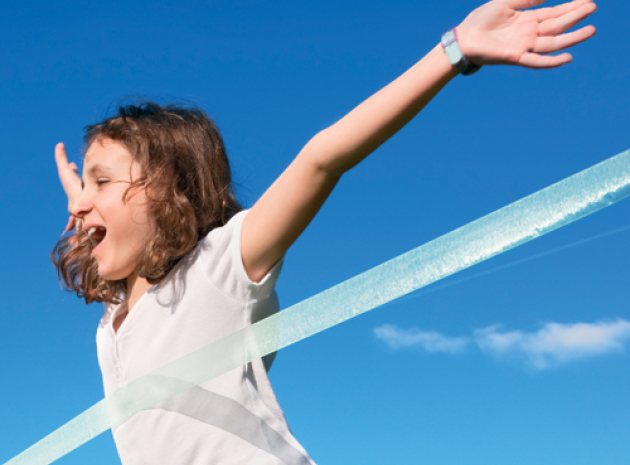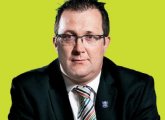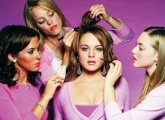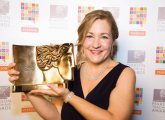As a PE teacher, are you firmly rooted in the past and doing it the way you have always done it, or are you ready to embrace changes and plan for an exciting future? There is no doubt that those in charge of physical education in secondary schools are facing considerable challenges at the moment, not least of which is ensuring a lasting legacy following the 2012 Olympic Games. This will not be achieved by undertaking one initiative after another, which are generally dependent on external funding; experience has taught us that when the funding goes, so too does the impact of the initiative.
In 2014, for the first time in over two decades, there will be an opportunity for all schools to develop a curriculum that is planned, developed and owned by teachers and students. If you get it right everyone will be inspired both to teach it and to learn from it. So why wait? Whilst the Olympic spirit is capturing everyone's imagination, let's start making changes to the way we deliver our PE obligation at KS3 and 4 right now, so that instead of feeling a sense of being involved in political box-ticking, teachers are motivated, and students are in turn inspired to take up lifelong physical activity.
We do not want a sport-led curriculum driven by competition, because we all know that sport emanates from physical education, not the other way round. In secondary schools, too often there is not only disproportionate time allocated to games activities but also far too much emphasis on performance skills. Teachers should not only challenge and motivate student students to 'learn to move' but should also appreciate the value of 'moving to learn'; the latter is often sadly lacking, which is an opportunity wasted – as there is significant evidence demonstrating that students who are truly physically educated achieve better right across the curriculum.
Of course, a high quality physical education curriculum should provide opportunities that enable young people to become physically competent, as this is the foundation for all sport and competition; and they should be as physically active as possible in every session. But this foundation must include a broad range of opportunities that are both competitive and non competitive, which support students to develop competence in a whole range of skills, and will promote positive attitudes towards taking up a healthy active lifestyle both within and long beyond school. For example:
• Good body control is essential, and the ability to be able to transfer appropriate skills between a range of activities as well as making connections between different activities with similar strategies and tactics. Hockey and soccer are virtually the same game; one is played with a small ball and a stick, whilst the other with a bigger ball and feet. Gymnastics and dance are also very closely related and the development of movement sequences in either involves similar linking strategies.
• If students are to improve their performance they must be given opportunities to analyse and evaluate both their own and others' work. In order to do this effectively they need to recognise what is good, what is not so good and how to address what needs to be improved. The ultimate outcome is to attain exceptional performance, which also requires significant mental and physical capacity; are you able to say your students really have this, and if they don't, what do you need to do to support them in acquiring it?
• It is not good enough for your students to simply know what a healthy active lifestyle entails; they should be supported to make health and activity part of their daily life. It is essential that teaching ensures pupils understand the necessary contribution of physical activity to the healthy functioning of the body and mind. They are more likely to adopt a healthy lifestyle if they feel confident to do so – and confidence comes hand in hand with competency.
• Secondary physical education should build on, and develop what pupils have learnt in Key stages One and Two, as they take more of the initiative and make more decisions for themselves. How many different teaching strategies do you use in order to develop this? Do you discuss and adopt within your department, for example, Mosston's spectrum of teaching styles in physical education, which although published in 1986 is relevant today?
• During Key Stage Four students must build on work done in Key Stage Three and be encouraged and supported to tackle more complex and demanding activities; the programme should not be solely about optional leisure activities, as there is still much to learn. Many individuals will want to develop their skills as a coach or official as well as their performance. Some will go on to be specialist or elite performers, increasing their involvement in activities outside school and in later life.
When PE teachers show commitment and enthusiasm for the subject whilst providing positive role models, pupils are likely to respond by making physical activity and sport a central part of their lives both within and outside school. If teachers show confidence in their students' ability and challenge them appropriately, they will make progress and achieve. And by raising youngsters' aspirations, we will also increase their determination to succeed and to take pride in, and celebrate their successes; a legacy of which everyone involved with both the London 2012 Olympic Games, and physical education in schools, can truly be proud!
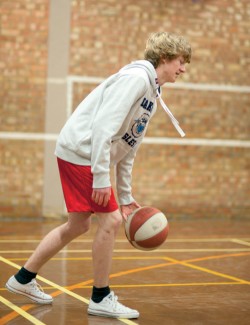
PE in action
Nathalie Fitzgerald is Schools Partnership Development Manager at Leytonstone Business & Enterprise Specialist School
"We see physical education as fundamental to young people's development and life chances. In inner cities, with limited outdoor space, ensuring that PE opportunities for students are maximised can be especially challenging. We've found that the key is flexibility; we have an extensive extra curricular programme delivered not just by the PE department (even the head teacher runs a club and manages a team); drop down days; sports taster days; sports tours; and school journeys that support the PE curriculum. Our leaders, officials and mangers are deployed in the school and community, where they not only develop their own skills but also build capacity and support wider participation in sport and physical activity. London 2012 and being part of the Get Set network (getset.london2012.com) has positively influenced our PE provision: at KS3 we've introduced new Olympic and Paralympic sports, including handball and indoor rowing. The athletics curriculum has expanded and we now run year-round program to support the development of fundamental skills and fitness. We use a lot of positive imagery and 'iconology' throughout the school to help provide real example of good work and achievement, ranging from videos of Olympians and Paralympians, to shots of our own young people. At KS4 we provide a wider curriculum, encouraging students to look at physical education and sport as a life skill, including units where they have the opportunity to gain skills, qualifications and experience as young leaders, officials and team managers. We encourage young people to take themselves out of their comfort zone, and go through the process of being challenged and overcoming barriers, celebrating engagement at every level and really supporting them to have a go at things they have never tried before. Through this process we believe that our pupils discover things about themselves that will enable them to grow and develop as people, and help them to be the best that they can be, always!"
About the author
Eileen Marchant is a member of the Association for Physical Education (AFPE), chair of the professional development board kitemarking panel and responsible for supporting AFPE's home countries and regions' strategic development. She is currently chair of the AFPE management board.


